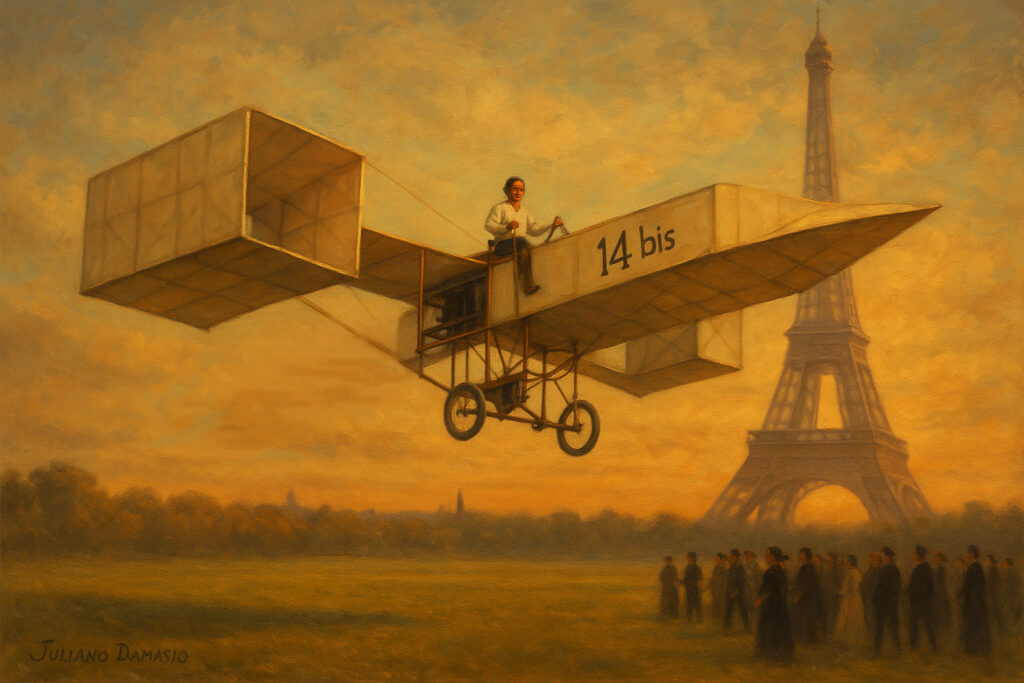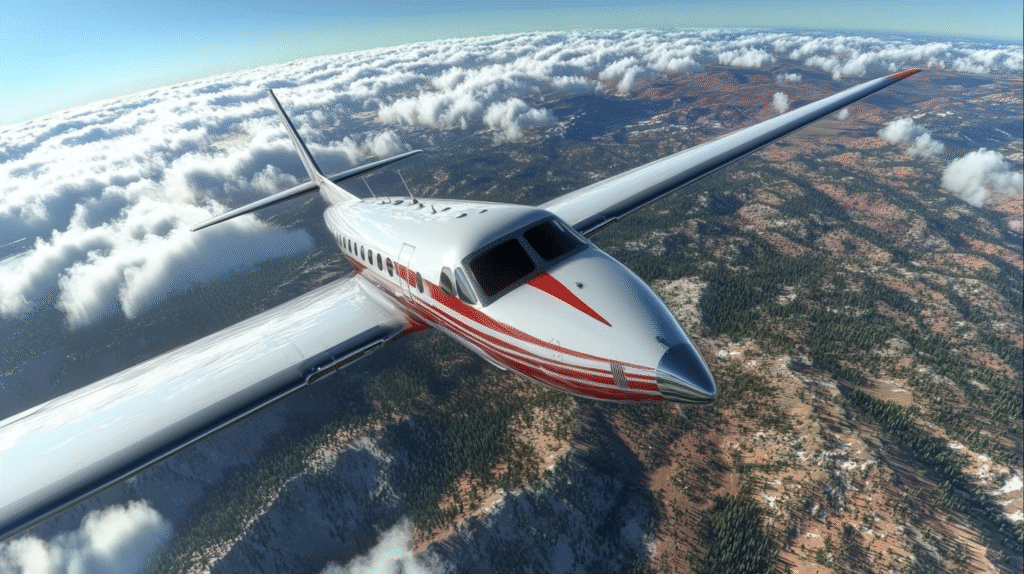Vintage Travel Talk
Phrasal Verbs from Transportation History
This page follows the APA Method – Acquire, Practice, Apply, and it’s structured into 5 learning sessions:
🎧 Session 1 – Comprehension
Watch two videos: a podcast episode for context and a shadowing video to practice pronunciation and intonation.
📚 Session 2 – Phrasal Verb Dictionary
Explore the key phrasal verbs used on this page. Each one comes with definitions and clear usage examples.
🧠 Session 3 – Contextual Reading
Read a narrative text where the phrasal verbs are highlighted in context to help you understand how they work naturally.
✅ Session 4 – Application
Test your knowledge through focused exercises. Just click the button below to get started.
❓ Session 5 – Text Comprehension
Answer guided questions based on the reading, improving your understanding and reading skills.
🎧Hit play and watch phrasal verbs come alive in real-life
PHRASAL VERBS DICTIONARY
Here we'll explore three important aspects of everyday life, using phrasal verbs expressed in the past tense
PAST TENSE
Welcome to “Phrasal Verbs Through Time”!
On this page, we’ll explore three essential aspects of daily life—communication, transportation, and fashion—using common phrasal verbs expressed in the past tense. This content is part of a broader session where we discuss frequently used phrasal verbs related to these topics in different verb tenses. While here you’ll find examples and reflections expressed in the present, we also invite you to explore similar texts set in the present and future tenses.
The Evolution of Transportation: A Complete Guide to Phrasal Verbs in Context
The Dawn of Human Mobility
Since ancient times, humans have set out (depart) on journeys across vast territories, initially relying on (depending) their own feet as the primary means of locomotion. However, as civilizations began to spread out (disperse) and establish settlements in diverse geographical locations, people quickly realized they needed to come up with (create) more efficient solutions to overcome the limitations of walking.
📚 PHRASAL VERB SPOTLIGHT: SET OUT
Meaning: To begin a journey with a specific purpose or destination
Structure: SET + OUT (inseparable)
Usage Examples:
- “Explorers set out to discover new lands” (begin journey)
- “We set out our plans clearly” (arrange/display)
Common Mistakes: Don’t confuse with “set up” (establish) or “set off” (depart/trigger)
The domestication of animals marked a pivotal moment when societies began to turn to (consult) creatures like horses, mules, oxen, and camels to cover greater distances with increased efficiency. These remarkable animals not only helped people get around (travel) more effectively but also carried out (executed) the vital task of transporting goods, supplies, and materials across challenging terrains.
📚 PHRASAL VERB SPOTLIGHT: TURN TO
Meaning: To seek help from someone/something or to start using as an alternative
Usage Examples:
- “People turned to animals for transportation” (sought alternative)
- “She turned to her friends for advice” (sought help)
Synonyms: resort to, rely on, seek help from

Through their strength and endurance, these creatures linked up (connected) distant communities, enabling the establishment of extensive trade routes that would bring about (cause) profound economic and cultural exchanges. As merchants began to branch out (expand) into new territories, they came across (found) challenges that would push forward (advance) innovation in transportation technology.
The Age of Mechanical Innovation
As civilizations continued to build up (accumulate) their infrastructure and trade networks expanded exponentially, the demand for more sophisticated and efficient transport systems began to push forward (advance) remarkable innovations. Early inventors and craftsmen worked out (resolved) ingenious designs for wheeled vehicles, eventually coming up with (inventing) various types of carriages and carts.
📚 PHRASAL VERB SPOTLIGHT: COME UP WITH
Meaning: To think of, produce, or find (a solution, idea, or answer)
Structure: COME + UP + WITH (inseparable)
Usage Examples:
- “Scientists came up with a breakthrough” (discovered)
- “Can you come up with the money?” (provide/find)
Related Verbs: think up, work out, figure out
However, these pioneering vehicles frequently ran into (encountered) significant obstacles that held back (restrained) their widespread adoption. Poorly constructed roads, unpredictable weather conditions, and painfully slow travel times stood in the way (blocked) of efficient transportation, often wearing down (eroding) both travelers and their animals. Many early transportation companies went under (collapsed) due to these persistent challenges.
📚 PHRASAL VERB SPOTLIGHT: RUN INTO
Meaning: To encounter problems/difficulties OR to meet someone unexpectedly
Structure: RUN + INTO (inseparable)
Usage Examples:
- “The project ran into delays” (encountered problems)
- “I ran into an old friend” (met unexpectedly)
Context Clues: Problems/difficulties vs. people determine meaning
The extensive railroad networks that began to spread across (expanded) continents effectively paved the way (enabled) for modern mobility, moving entire societies forward at (progressing) an absolutely astonishing pace while opening up (revealing) previously inaccessible regions for development and settlement. Engineers worked on (developing) expanding these networks, ensuring they could reach out (contact) to remote areas.
The success of rail transportation led to (resulted) increased investment in infrastructure projects that would carry on (continue) the momentum of this transportation revolution. These developments brought in (introduced) new opportunities for commerce and migration, as people could now move around (wander) with unprecedented ease and reliability.

The Automobile Era
Soon after the railroad boom had settled in (adjusted) as a dominant force, automobiles came along (arrived) as the next revolutionary step in personal transportation. These mechanical marvels started as relatively simple machines but quickly evolved to give people the unprecedented freedom to go about (approach) their travels independently, without being tied down (restricted) to fixed schedules or predetermined routes.
📚 PHRASAL VERB SPOTLIGHT: COME ALONG
Meaning: To appear/arrive OR to accompany someone OR to progress/develop
Structure: COME + ALONG (inseparable)
Usage Examples:
- “A great opportunity came along” (appeared)
- “Would you like to come along?” (accompany)
- “How is your project coming along?” (progressing)
Usage Tips: Often implies something happening by chance or invitatio.
The automotive industry began to take shape (form), with manufacturers focusing on (targeting) improving reliability, comfort, and accessibility. As production methods improved and costs came down (fell), cars began to catch on (become popular) with the general public, fundamentally changing how people thought about (considered) personal mobility. Families could get together (gather) more frequently, businesses could branch out (expand) into new markets, and entire communities began to grow up(mature) around the newfound mobility that automobiles provided.
The Aviation Breakthrough
Then, in the early 20th century, aviation took flight (escaped) as perhaps the most ambitious and transformative development in transportation history. Pioneering aviators and inventors had been working away (laboring) at the challenge of human flight for decades, determined to break through (overcome) the barriers that had held back (restrained) this ultimate form of mobility.
📚 PHRASAL VERB SPOTLIGHT: BREAK THROUGH
Meaning: To overcome an obstacle/barrier OR to make a sudden advance/discovery
Structure: BREAK + THROUGH (inseparable)
Usage Examples:
- “Scientists broke through the research barrier” (overcame obstacle)
- “The sun broke through the clouds” (penetrated)
- “She broke through in her career” (achieved success)
Collocations: break through barriers, break through to success
On October 23, 1906, Brazilian inventor Alberto Santos Dumont pulled off (succeeded) an extraordinary achievement that would stand out (shine) in aviation history forever. His innovative aircraft, the 14-bis, successfully took off (soared) and soared 60 meters in just 7 seconds, demonstrating to the world that powered flight was no longer just a dream but a tangible reality.
📚 PHRASAL VERB SPOTLIGHT: PULL OFF
Meaning: To succeed in doing something difficult OR to remove by pulling
Structure: PULL + OFF (separable)
Usage Examples:
- “He pulled off an amazing victory” OR “pulled the victory off” (achieved)
- “Pull off the bandage carefully” (remove)
Informal Usage: Often used for impressive or unexpected successes

This remarkable accomplishment set off (trigger) a wave of excitement and innovation throughout the aviation community. Santos Dumont didn’t give up (quit) after his initial success; instead, he continued to work on (improve) improving his designs and techniques. Just weeks later, he broke his own record, flying an impressive 220 meters in 21 seconds—an achievement that would set aviation history apart forever and pave the way for the development of modern aircraft.
The Continuous Evolution
The success of early aviation pioneers sparked a global race to build on (develop) their achievements, as inventors and engineers set about (begin) creating more advanced aircraft designs. The aviation industry began to take off (soar) in earnest, with companies springing up (emerging) to carry out (perform) research and development projects that would bring forth (produce) increasingly sophisticated flying machines.
📚 PHRASAL VERB SPOTLIGHT: BUILD ON
Meaning: To use something as a foundation for further development
Structure: BUILD + ON/UPON (inseparable) – “upon” is more formal
Usage Examples:
- “We built on their research” (used as foundation)
- “The company built on its success” (expanded from)
Business English: Common in corporate and academic contexts

From humble horse-drawn carts to roaring engines and magnificent winged machines, transportation has consistently kept up with (matched) humanity’s relentless drive to move ahead (proceed) and explore new frontiers. Each groundbreaking innovation has built upon (based) the foundations laid by previous developments, continuously speeding up (accelerating) progress and opening up (revealing) a world of unprecedented possibilities.
📚 PHRASAL VERB SPOTLIGHT: KEEP UP WITH
Meaning: To maintain the same pace/level OR to stay informed about
Structure: KEEP + UP + WITH (inseparable three-word phrasal verb)
Usage Examples:
- “Technology keeps up with demand” (maintains pace)
- “I keep up with the news” (stay informed)
Related: catch up with, stay up to date with
This ongoing evolution has brought together (united) distant civilizations, broken down (collapsed) geographical barriers, and set up (establish) the foundation for our modern interconnected world. As we look back (reflect) on this incredible journey of transportation evolution, we can see how each breakthrough has added up (totaled) to create the complex, efficient, and diverse transportation systems we rely on (trust) today.

Conclusion: Learning Through Context
The legacy of innovation continues to drive us forward (motivate), promising even more remarkable developments that will undoubtedly reshape how we move about (roam) in the future. This text demonstrates how phrasal verbs naturally fit into (belong) English communication, making transportation history an excellent context for language learning.
LOOKING FOR EXERCISES
Click on each question below to reveal the suggested answer.
Try to think about your own answer before opening it.
Practice using the phrasal verbs naturally and build your confidence!
On the Move
What animals were mainly used for early transportation?
Horses and mules were commonly used for early transportation.
What limitation did early carriages face?
They struggled with poor roads and long travel times.
How did steam locomotives change transportation?
They significantly reduced travel time and connected distant cities more efficiently.
What advantage did the first cars provide?
They gave people unprecedented freedom to travel in all directions.
When and where did Santos Dumont make the first official airplane flight?
On October 23, 1906, at Bagatelle field in Paris, covering 60 meters in about 7 seconds.
